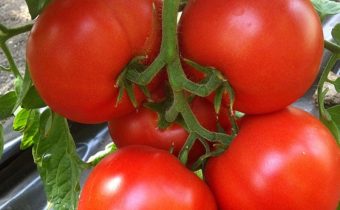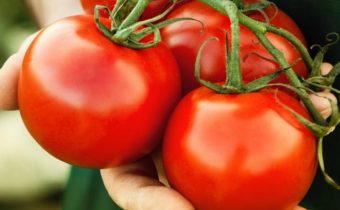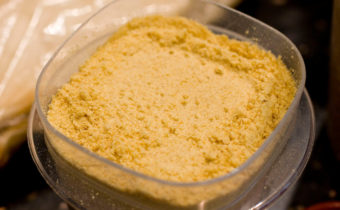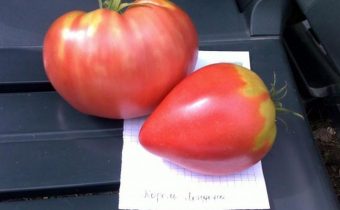Tomatoes burned in the greenhouse - what to do?
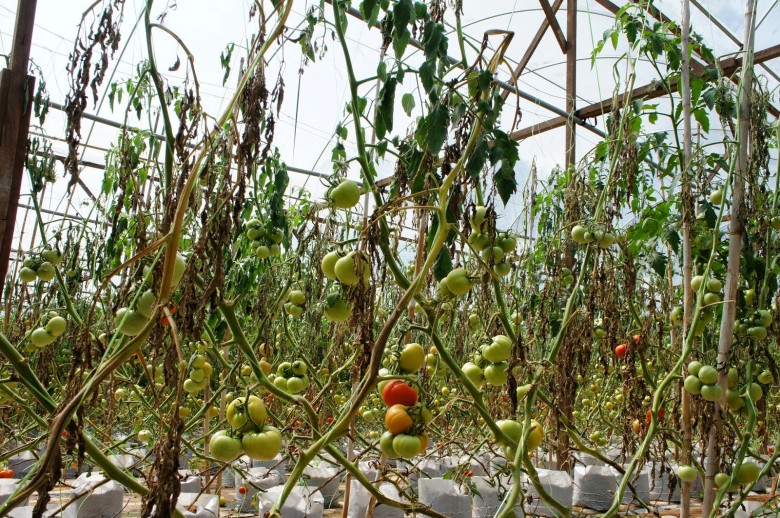
In extreme heat, tomatoes growing in a greenhouse or greenhouse are at risk of overheating. A gardener who has recently built a greenhouse and is a newcomer in this business may be confused.
How to save seedlings from death, not to lose the crop? You need to know about the conditions under which overheating occurs in order not to get caught off guard. Taking timely action will help prevent trouble.
Alarming symptoms
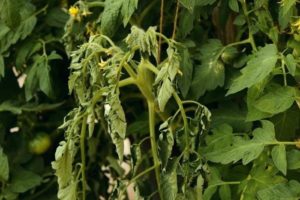
A novice gardener needs to learn a simple but obvious truth. Tomatoes feel comfortable at temperatures from +22 to 25C in the daytime. At night, they grow well at temperatures from +16 to 18C. The greenhouse effect of greenhouses in combination with hot weather can lead to overheating of plants. In extreme heat in the greenhouse it is very hot, and the plants start to suffer from stuffiness when the temperature rises to + 30-35 C.
If the tomatoes were in such conditions for more than 4 hours, they appear the first signs of overheating.
The first symptoms of overheating are easily recognized when examining seedlings:
- foliage discoloration;
- slower growth of culture;
- Falling ovaries and flowers.
With further exposure to heat leaves start to curl up. On the foliage and fruits you can see spots from sunburn. Smooth peel of tomatoes cracks, the fruits become colored by the type of mosaic. It looks like yellow blotches on a red background. If you do not take action, tomatoes quickly burn or rot.
When overheated plants spend all their energy on breathing and stop growing. Leaf discoloration occurs due to lack of oxygen.
How to reanimate burnt tomatoes
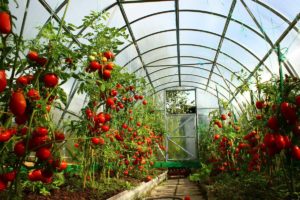
The faster the gardener comes to the rescue of the crop, the more likely it is to save the crop. First of all, it is necessary to organize a good ventilation. Draft will cool exhausted plants and help them recuperate for growth. When organizing airing, care must be taken to blow two tiers: at the top and in the middle. If you blow only the bottom of the greenhouse, the soil quickly dries. This will nullify the benefit of airing.
At night, you have to ensure that the temperature inside the greenhouse does not rise above + 16-18C. Comfortable environment will help the tomatoes to relax and gain strength before a hot day.
Also save vegetables from overheating simple measures will help:
- carbon dioxide in the air. In the greenhouse put a bucket or a bowl of manure, which began to roam. Capacity filled with manure to half and pour water. It is necessary to saturate plants with carbon. If there is no manure, you can put a little dry ice in the tank (from 10 to 20 g / m3);
- watering under the roots. Culture watered 1-2 times in seven days. Watering should occur in the morning. It is not necessary to re-moisten the soil, so that the roots do not start to rot. If the weather is cloudy, 1-2 l of water is enough for a water treatment, and if it is sunny, the amount of liquid increases from 6 to 10 l.
After each watering, the greenhouse is aired so that the plants do not get sick.
In the daytime, watering tomatoes is not allowed. The soil becomes too wet, and the leaves may wilt due to a sharp temperature drop. You can also spray the vegetables with a low concentration zinc solution. This will increase their resistance to heat. Greenhouse shading will help reduce the temperature from 5 to 7C, but tomatoes cannot be kept for a long time without sun and light.
Experienced gardeners are advised to think through the design of the greenhouse.Since polycarbonate sheets quickly heat the sun, it is better to replace it on the north side with light non-translucent material. This will help maintain an optimal indoor climate. The height of the greenhouse, intended for the cultivation of tomatoes, should not be below 180 cm. In the high construction air circulates much better. This will also help to save from the heat.
Overheating of tomatoes can occur at any time, and the gardener should be ready to protect his farm. Simple knowledge and timely action will help to protect greenhouse vegetables.


